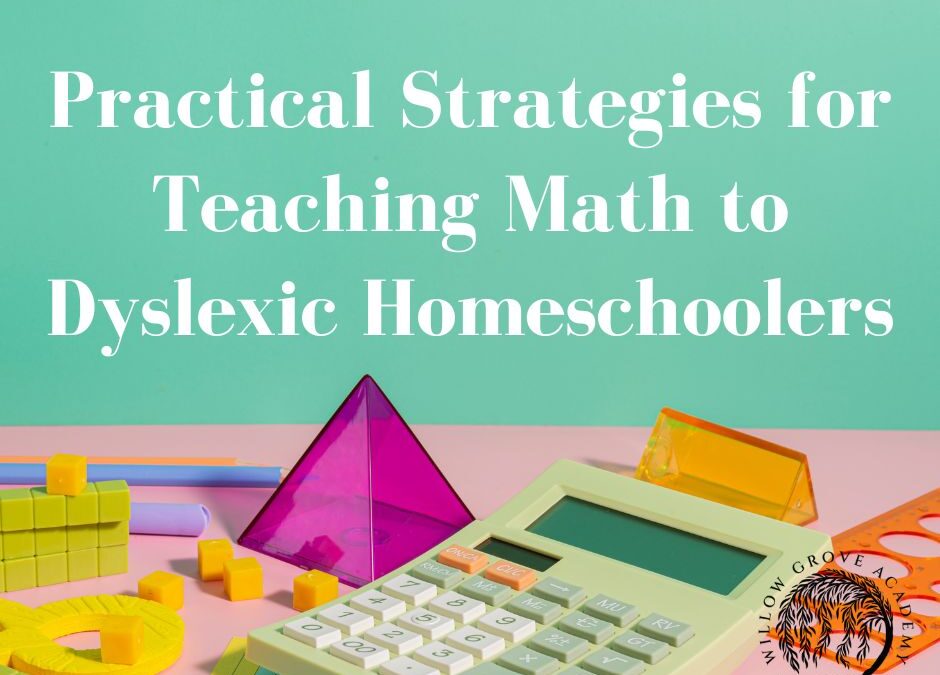Often with a dyslexia diagnosis comes a dyscalculia and possibly a dysgraphia diagnosis.
That can feel overwhelming and for sure there is a big learning curve for both you and your child. Even if there is no diagnosis of dyscalculia, dyslexia spills over into math learning.
Language processing issues affect the spatial reasoning needed for more difficult math problems
The good news is often the same solutions for reading intervention work with math intervention. The key to effective math teaching (and reading) is multisensory learning.
It can be difficult to find multisensory math curriculum but once you learn the why behind multisensory learning, you can easily adapt the curriculum to accommodate your child.
There is a ton of research indicating that Orton-Gillingham (OG) based instruction is the gold standard for reading intervention. There isn’t as much research behind how effective it is in math but if you understand OG, you can see why it would work with math as well.
The strategy behind OG is structured, explicit, prescriptive instruction. Each lesson is custom tailored to the individual student which is why it works so well.
The beginning of the process is structure. You need to be intentional about doing math regularly and the lessons need to incorporate constant review of previous material. Start each lesson with practice of concepts previously learned, move on to new material instruction, and then incorporating what was learned and applying it.
Maintaining this process gives your student structure so he knows what to expect and also gives you an indication of how he is doing with both old and new material.
The second step is explicit instruction. Abstract ideas are the enemy of a child who struggles with math. Whenever possible, the why or the logic behind each step is necessary.
This become difficult in advanced levels of math, but in the early levels, this is important. “Just because that’s how it is,” will not be enough of an explanation. Explicit instruction is freeing to a child who struggles and can help him understand why he is doing the steps that he is doing.
The third step is prescriptive. This means that you do not move on until a concept is mastered. Each lesson is designed to be taught at his level and sometimes he might not be able to move on even if the text is moving on.
It also means that you are constantly incorporating old material and combining it with the new material to ensure that he is retaining previously taught material.
If you are new to the journey of a language based disability, it can feel overwhelming and impossible. As you start to research teaching strategies, you will see that there is spill-over between math and reading instruction.
As you become skilled in reading intervention, transfer what you have learned over to math intervention. The strategies are the same, it’s just the material that is different. You will find what works and when you do, stick with it!

